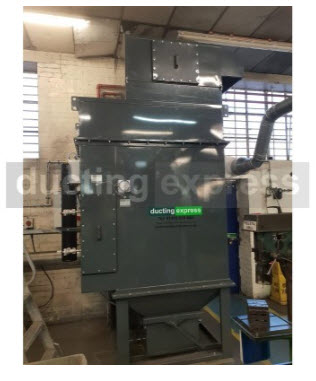There are a large number of ways that you could try to quantify the best dust extractor for a small workshop but, more importantly than brand, size or capacity, a sensible decision will come down to these factors:
- 1. The volume of waste
- 2. How to get rid of the waste
- 3. Amount of extraction required to fulfill your requirements
In fact, how you get rid of your waste is even more important than the extraction system itself which is why it is important to design a system that works specifically for the environment it is in & the processes that are at work within that environment. Where we are able to do this for clients, we are often able to save them significant amounts of money and to improve both their work and their safety processes.
1. The volume of waste
The volume (and frequency) of waste will determine the type of dust extraction system that is best for the environment. There are different types of workshop dust extractor that would be most appropriate for a small workshop. Some of these are:
Entry-level dust extractors
These are the least expensive option. They typically filter the air into bags that make the collection of waste easy. There are even simpler options but we would guard against having dust extractors that do not, as a minimum, have a bag that can be tied off because there is no point in extracting material that has been deemed hazardous only for the people collecting that waste to get contaminated with it.
Entry-level workshop dust extractors are usually best for smaller businesses (that typically have 2 – 3 people working in them. The downside is that the filter bags are consumables and need replacing, meaning higher running costs.
Dust extractors with a shaker filter

The next level of dust extraction for a small workshop would include a shaker filter that would agitate the filter bag. This cleans the filters & enables them to be reused rather than replaced. The advantages of this type of system are in that there is longevity of the filter media. The downsides are that the system cannot extract dust 24/7 (in order for the shaker to run, the system must not be extracting dust). It is also more difficult to put plastic bag bins under these systems which means that their waste capacity is typically lower.
Reverse Jet Filters
 These are the next level of dust extraction system and can be overkill in a small workshop but they can work 24/7. The reverse jet can clean the filters as the system is running.
These are the next level of dust extraction system and can be overkill in a small workshop but they can work 24/7. The reverse jet can clean the filters as the system is running.
2. Getting rid of the waste
The best dust extraction system is one that fits the application and budget of the owner and that is most fit for purpose. In this respect, people regularly buy expensive systems that are not fit for purpose because little thought has been given to getting rid of the waste. In this way, installing a vacuum point at the exit point of the waste can be more important than the type of dust extractor.
In addition, by making housekeeping easy, waste can be safely removed once it has been extracted from the workshop and businesses can help to ensure that there are no lapses once the extraction machine has done its job.
3. Site-specific factors
There are site-specific factors that will determine which woodworking dust extractor is the best for the environment (for example, some dust extraction units are ATEX-rated to prevent fires and to manage the extractions of materials that may contain sparks or molten material. Here, for example, it will most likely be necessary that a wet extraction system is required. A site survey or a conversation with one of our dust extraction experts will help to determine that, however.
Rather than looking at brand or capacity, the best dust extractor for a small workshop is one that has been designed for the needs of the business. An analysis of the processes that the business is using as well as their housekeeping can lower the costs of the machinery that is needed and improve the profitability and safety of the business. Our expertise in the woodwork & joinery industry should help you to get the best dust extraction systems for woodwork available.
